How to Avoid a Regulatory Fire in the Gig Economy
Posted on May 25th, 2017 Read time: 4 minutes
By: Peter Limone, President and CFO
Published By: Entrepreneur.
Employing contingent workers is a hot trend, but startups embracing this strategy must take steps to shield themselves from blowback. In fact, entrepreneurs unfamiliar with the gig economy and its unique liabilities are getting burned.
In March, worker misclassification blew up in the face of Instacart, which spent $4.6 million to settle a class-action lawsuit. Cleaning startup Homejoy was scorched so badly by worker misclassification in 2015 that it was forced to shut down.
Why, then, are more and more entrepreneurs playing with fire? While the new economy brings fresh challenges, embracing a contingent-workforce strategy can cut labor costs by up to 40 percent, according to the AFL-CIO’s Department for Professional Employees. Representing nearly 30 percent of the U.S. workforce, contingent workers include temporary workers (either sourced directly or via staffing agencies), independent contractors, third-party consultants and human cloud workers.
What portion of those are misclassified employees? Nobody is quite sure, but Instacart and Homejoy are hardly the only ones to get it wrong. The Equal Opportunity Employment Commission collects $404 million per year from noncompliant employers.
Fortunately, entrepreneurs can enjoy the fire without becoming engulfed. The following steps can shield your company from unexpected regulatory heat:
1. Classify with care.
Just because you don’t control a worker’s hours and projects doesn’t automatically make that person an independent contractor. In Pennsylvania, for example, an online expert network came under fire for misclassifying a mapping and navigation consultant. Simply because the worker was free to pursue other clients, the presiding court found, didn’t necessarily mean he “customarily engaged in other business.” Under Pennsylvania law, that worker’s economic dependence on the online network made him a misclassified employee..
How can you protect yourself from similar mistakes? Thoroughly vet all potential independent contractors to ensure they qualify. The IRS provides a 20-point test for this very purpose. Do they have business cards and their own websites? Have they recently done work for other clients? When in doubt, consult an employment law expert or find an HR provider to vet 1099 contractors for you.
2. Revisit workplace conduct policies.
Whether you have one employee or 1,000, you need equal employment opportunity and anti-harassment policies. Proactively seek samples of lawyer-reviewed policies from your HR provider. Provide them to all W-2 employees, including temporary hires. Conduct in-person trainings for all new hires and whenever policies are updated.
Think you can skirt the issue because you’re small? So did GitHub, which faced a sexual harassment investigation because it didn’t have the right policies in place. Although founded in 2008, GitHub waited until 2014, when it had more than 200 employees, to hire a human resources executive.
3. Follow I-9 guidelines.
The Immigration Reform and Control Act of 1986 requires verification of all new hires — although not independent or statement-of-work contractors — via a two-section I-9 form. This form must be completed accurately within a new employee’s first three days of work. Companies with missing or incomplete I-9 paperwork can face stiff penalties, regardless of whether they employ foreign citizens.
Before U.S. Immigrations and Customs Enforcement personnel come calling, consider partnering with an employer of record (EORs). EORs assume I-9 responsibilities (and any penalties levied for noncompliance) by acting as a “man in the middle” employer for temporary workers. If you decide to go it alone, U.S. Citizenship and Immigration Services offers an excellent webinar series on I-9 requirements.
4. Beware of the FLSA.
The Fair Labor Standards Act is an expansive, tricky-to-follow law. While certain executive and administrative employees — in addition to statement-of-work and independent contractors — are exempt, nonexempt workers are entitled to overtime pay and regular breaks. Other benefits gig workers want, such as health care and paid vacation time, may improve retention, but they’re not required by the FLSA.
How can you tell whether a worker is exempt? Some jobs, such as outside sales employees, are exempt by definition. Similar roles, however, such as inside sales, may not be.
Before completing any worker’s federal tax forms, check compliance guidelines issued by the U.S. Department of Labor’s Wage and Hour Division. For greater protection, share job descriptions with a reputable HR provider, which can evaluate them for proper categorization and compliance.
5. Expect inspectors.
Own a business services company? Don’t be surprised if a U.S. Occupational Safety and Health Administration representative comes knocking. His or her visit could stem from a complaint — or the visit could be a mere ergonomics inspection.
If temporary workers have yet to receive workplace safety training, then you have a difficult decision to make: Do you deny the inspector entrance, which could escalate your case? Do you let him or her in, resulting in the discovery of violations, many of which carry five-figure penalties?
Before facing such a choice, talk to your HR provider about OSHA compliance. Ask the provider to perform an evaluation to ensure that a sound safety program is in place. Train every new face — temporary and otherwise — to properly adhere to it. If you work with a staffing or payrolling partner, ask whether temporary workers need ergonomic accommodations that can be prepared prior to their start dates.
Don’t let gig worker liabilities burn up your reputation. With online work services set to grow by 77 percent year over year, possibly reaching $102 billion by 2020, regulators are paying attention. If your goal is to master the gig economy, so should you.
Check out the published article on Entrepreneur.
Related Articles
Posted on May 25th, 2017 Read time: 4 minutes
By: Peter Limone, President and CFO
Published By: Entrepreneur.
Employing contingent workers is a hot trend, but startups embracing this strategy must take steps to shield themselves from blowback. In fact, entrepreneurs unfamiliar with the gig economy and its unique liabilities are getting burned.
In March, worker misclassification blew up in the face of Instacart, which spent $4.6 million to settle a class-action lawsuit. Cleaning startup Homejoy was scorched so badly by worker misclassification in 2015 that it was forced to shut down.
Why, then, are more and more entrepreneurs playing with fire? While the new economy brings fresh challenges, embracing a contingent-workforce strategy can cut labor costs by up to 40 percent, according to the AFL-CIO’s Department for Professional Employees. Representing nearly 30 percent of the U.S. workforce, contingent workers include temporary workers (either sourced directly or via staffing agencies), independent contractors, third-party consultants and human cloud workers.
What portion of those are misclassified employees? Nobody is quite sure, but Instacart and Homejoy are hardly the only ones to get it wrong. The Equal Opportunity Employment Commission collects $404 million per year from noncompliant employers.
Fortunately, entrepreneurs can enjoy the fire without becoming engulfed. The following steps can shield your company from unexpected regulatory heat:
1. Classify with care.
Just because you don’t control a worker’s hours and projects doesn’t automatically make that person an independent contractor. In Pennsylvania, for example, an online expert network came under fire for misclassifying a mapping and navigation consultant. Simply because the worker was free to pursue other clients, the presiding court found, didn’t necessarily mean he “customarily engaged in other business.” Under Pennsylvania law, that worker’s economic dependence on the online network made him a misclassified employee..
How can you protect yourself from similar mistakes? Thoroughly vet all potential independent contractors to ensure they qualify. The IRS provides a 20-point test for this very purpose. Do they have business cards and their own websites? Have they recently done work for other clients? When in doubt, consult an employment law expert or find an HR provider to vet 1099 contractors for you.
2. Revisit workplace conduct policies.
Whether you have one employee or 1,000, you need equal employment opportunity and anti-harassment policies. Proactively seek samples of lawyer-reviewed policies from your HR provider. Provide them to all W-2 employees, including temporary hires. Conduct in-person trainings for all new hires and whenever policies are updated.
Think you can skirt the issue because you’re small? So did GitHub, which faced a sexual harassment investigation because it didn’t have the right policies in place. Although founded in 2008, GitHub waited until 2014, when it had more than 200 employees, to hire a human resources executive.
3. Follow I-9 guidelines.
The Immigration Reform and Control Act of 1986 requires verification of all new hires — although not independent or statement-of-work contractors — via a two-section I-9 form. This form must be completed accurately within a new employee’s first three days of work. Companies with missing or incomplete I-9 paperwork can face stiff penalties, regardless of whether they employ foreign citizens.
Before U.S. Immigrations and Customs Enforcement personnel come calling, consider partnering with an employer of record (EORs). EORs assume I-9 responsibilities (and any penalties levied for noncompliance) by acting as a “man in the middle” employer for temporary workers. If you decide to go it alone, U.S. Citizenship and Immigration Services offers an excellent webinar series on I-9 requirements.
4. Beware of the FLSA.
The Fair Labor Standards Act is an expansive, tricky-to-follow law. While certain executive and administrative employees — in addition to statement-of-work and independent contractors — are exempt, nonexempt workers are entitled to overtime pay and regular breaks. Other benefits gig workers want, such as health care and paid vacation time, may improve retention, but they’re not required by the FLSA.
How can you tell whether a worker is exempt? Some jobs, such as outside sales employees, are exempt by definition. Similar roles, however, such as inside sales, may not be.
Before completing any worker’s federal tax forms, check compliance guidelines issued by the U.S. Department of Labor’s Wage and Hour Division. For greater protection, share job descriptions with a reputable HR provider, which can evaluate them for proper categorization and compliance.
5. Expect inspectors.
Own a business services company? Don’t be surprised if a U.S. Occupational Safety and Health Administration representative comes knocking. His or her visit could stem from a complaint — or the visit could be a mere ergonomics inspection.
If temporary workers have yet to receive workplace safety training, then you have a difficult decision to make: Do you deny the inspector entrance, which could escalate your case? Do you let him or her in, resulting in the discovery of violations, many of which carry five-figure penalties?
Before facing such a choice, talk to your HR provider about OSHA compliance. Ask the provider to perform an evaluation to ensure that a sound safety program is in place. Train every new face — temporary and otherwise — to properly adhere to it. If you work with a staffing or payrolling partner, ask whether temporary workers need ergonomic accommodations that can be prepared prior to their start dates.
Don’t let gig worker liabilities burn up your reputation. With online work services set to grow by 77 percent year over year, possibly reaching $102 billion by 2020, regulators are paying attention. If your goal is to master the gig economy, so should you.
Check out the published article on Entrepreneur.






